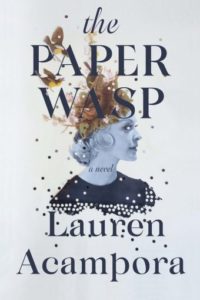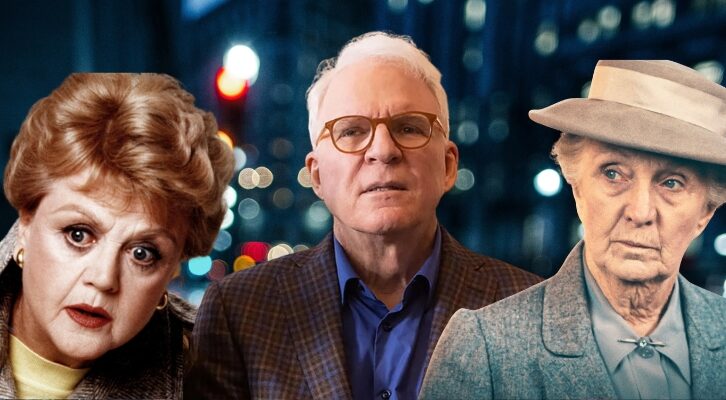
What, to the Writer,
Are Dreams?
Lauren Acampora on the Mythic Links Between
Dream Life and Creativity
“Dream is the personalized myth, myth the depersonalized dream.”
–Joseph Campbell
One morning, when I was younger, I gave a detailed description of my previous night’s dream to my mother. When I finished, she said, “I’m going to tell you something. Don’t ever share your dreams with anyone except your spouse. It’s boring to listen to other people’s dreams.”
I was offended at first. How could anyone, not to mention my own mother, fail to find my dreams as fascinating as I did? But of course she was right; it’s almost always deadly to hear other people talk about their dreams. As a rule, dreams die in the glare of the waking world, their shimmering aura evaporating in the harsh air outside the psyche. And yet, paradoxically, it’s the emotional aura of dreams that makes them feel so urgently worth sharing in the first place.
Needless to say, I didn’t listen to my mother. That is, I still share my dreams promiscuously—just not verbally.
Like so many other writers and artists, I employ dreams in my creative work. They’re an engine, a lending library. It’s a thrill to awake with a strange, arresting image in mind, or still grasping the thread of an allegorical dream story. Sometimes, a vision or scenario arrives as a package deal: the story is encased within the vision, packed up tight with a certain mood. For me, entire short stories have sprung from such vision: a woman alone in a pool, a finger touching a brain, a blindfolded child. A haunting dream of orange curtains in a hotel room has rolled into an entire novel (in which orange hotel curtains do not ever appear). And the power and mystery of dreams themselves inspired my novel The Paper Wasp, in which the narrator illustrates—and ultimately enters—her vivid, seemingly premonitory dreams.
There’s no shortage of literature and art that we know to have sprung from dreams. As legend has it, the poet Samuel Taylor Coleridge transcribed the first lines of “Kubla Khan” from a dream; the idea for Frankenstein came to Mary Shelley in her sleep; Robert Louis Stevenson conceived of Dr. Jekyll and Mr. Hyde in a consumptive fever dream; Stephen King came up with the idea for Misery while napping on a plane; William Styron had a dream that inspired Sophie’s Choice. One of the most prolific dream miners of all was Edgar Allen Poe, who used his frequent nightmares in much of his work. And famously, Paul McCartney dreamed the tune for the song “Yesterday.” Upon waking, he asked his friends if they knew it. “It’s a good little tune,” he said, “but I couldn’t have written it because I dreamt it.”
Dreams can feel like messages from another place, so it’s no surprise that many ancient cultures believed dreams to be transmissions of divine knowledge. The Ancient Egyptians considered dreams to be oracular and held vivid dreamers in high regard. They practiced dream incubation and lucid dreaming, and employed dream guides called the “Masters of Secret Things” who lived in dream temples. The Greeks, too, incubated dreams, and thought that gods came to dreamers through a keyhole to deliver messages. The Aboriginal Australians and the Iroquois started their day by sharing dreams, which were considered a source of guidance for both the individual and the community. The Hindu religion, too, believes that in dreams one is given a glimpse of Vishnu, whose own dreaming mind creates our reality. It isn’t difficult to understand where such beliefs come from if you’ve ever dreamed of reading a book, sentence after lucid, elaborate sentence. “I couldn’t have written it,” you might think, “because I dreamt it.”
It’s difficult, even paradoxical, to try to bear total witness to dreams, akin to pinning down the present moment, halting the slippage of time.
Brain science validates this phenomenon. Dreaming occurs during REM sleep, when the frontal lobe, the executive area of the brain, is shut down. Dreams are the mysterious activity of another part of the brain, beneath the scrutiny of the frontal lobe. Neurologically speaking, we really are receiving transmissions from a foreign entity; the unconscious, unobserved self slips through the keyhole when the guard is off duty.
Even during waking hours, the human brain is divided: the executive-desk frontal lobe and the inscrutable, intuitive limbic system are strangers to each other. In sleep, they are incommunicado. Because of this deep rift, the great majority of our dreams go unremembered, except on a buried emotional level. It’s difficult, even paradoxical, to try to bear total witness to them, akin to pinning down the present moment, halting the slippage of time. Just as the present can only be considered in retrospect, the unconscious mind can only be discerned via the remembered scraps of dreams. Any glimmers of awareness that may come during sleep, when a dream is fleetingly apprehended, are instances of the conscious half of the brain briefly observing and translating the activity of the submerged half: interpreting the enigmatic message of a stranger. These glimmers are rare and fleeting, occurring only during the hypnogogic and hypnopompic states, the liminal states between wakefulness and sleep.
In siphoning dreams for their work, writers and artists are tapping a valuable well. Dream logic and imagery carries an uncanny, allegorical quality that resonates deeply with readers and audiences. And it’s possible that dream recall actually enhances artistic output during waking hours. Scientific studies have confirmed a correlation between dream recall and creativity; those who recall dreams actually perform better on creativity evaluations. This may be because creative people are naturally better at recalling their dreams. It’s a chicken or egg situation: do creative people have more vivid and memorable dreams because they are innately creative, or can a brain become more creative through strengthening dream recall? Whatever the case, making use of dreams in art is a powerful way to reflect our foreign selves back to ourselves, while projecting that mystery self out to the world as archetypal image and story—dream as personalized myth, myth as depersonalized dream.
For writers, plugging into the unconscious provides a direct line to the human imagination in all its splendor and darkness. Indeed, in the midst of composing, it’s often unclear where the words are coming from. Sentences and imagery sometimes bubble up from a hidden well that surprises the conscious, transcribing mind. Some writers will tell you that they write in order to exorcise their demons, cleanse their psyches, to bring their fears and darkness into the light. Some will tell you that it’s better than therapy.
Writing at full tilt can be a euphoric state, tantamount to lucid dreaming. It’s half-awareness—one foot in, one foot out—a balance on the brink of consciousness. It’s not just in dreams that we can experience the ecstasy of flight and the exhilaration of omnipotence, but also when writing, when the words are flowing, the images appearing. Just as in a lucid dream, this exhilaration is paired with the knowledge that it can’t last, that it’s a temporary spell. Soon, we’ll become too aware of flying, and the spell will break and drop us to the ground. Still, we endeavor to capture and recapture this ecstasy of creative freedom, the ability to travel lightly anywhere at will, the bliss of floating to the treetops.
If writing fiction is analogous to dreaming, the experience of reading fiction can be, too. When we’re reading, another person is able to intrude into our psyches through the use of words alone, remotely projecting imagery onto the screens of our minds, suffusing them with atmosphere and mood. We are, in a way, sharing a dream with a stranger. And fiction, at its best, places a mirror before us, evoking terror and wonder. It affects us on an emotional level beyond language, and brings a frisson of recognition. There’s a momentary astonishment to encounter the familiar within the strange, something of our own inner lives on the page. There’s the eerie sense that the author has somehow entered and seen into us. The best art carries this sense of inevitability, of allegory, myth, dream—a truth that has always been there, that we already know in some deep part of ourselves.
This flare of astonishment is arguably the purpose of art. It’s the sudden thinning of the distance between us, the erosion of barriers that have been built and propped up by our conscious, waking lives. Like a flash of lightning, great art illuminates the human landscape in its breathtaking entirety and shows that the barriers are flimsy, false, only temporarily there. All at once, we are taken outside ourselves and given a glimpse of the Jungian collective unconscious, the subliminal wholeness of life, the enveloping dream of Vishnu. What is the purpose of all art, if not to puncture the illusion of fragmentation, to reveal the commonality of human experience, to return us—if briefly—to those collective waters?
__________________________________

The Paper Wasp by Lauren Acampora is out now via Grove Atlantic.
Lauren Acampora
Lauren Acampora is the author of The Wonder Garden, winner of the GLCA New Writers Award and a finalist for the New England Book Award; and The Paper Wasp, longlisted for the Center for Fiction’s First Novel Prize. She is a 2021 NYSCA/NYFA Artist Fellow in Fiction from The New York Foundation for the Arts. Her writing has appeared Paris Review, Guernica, The New York Times Book Review, and LitHub, among other places. She lives in Westchester County, New York with her husband, artist Thomas Doyle, and their daughter.



















